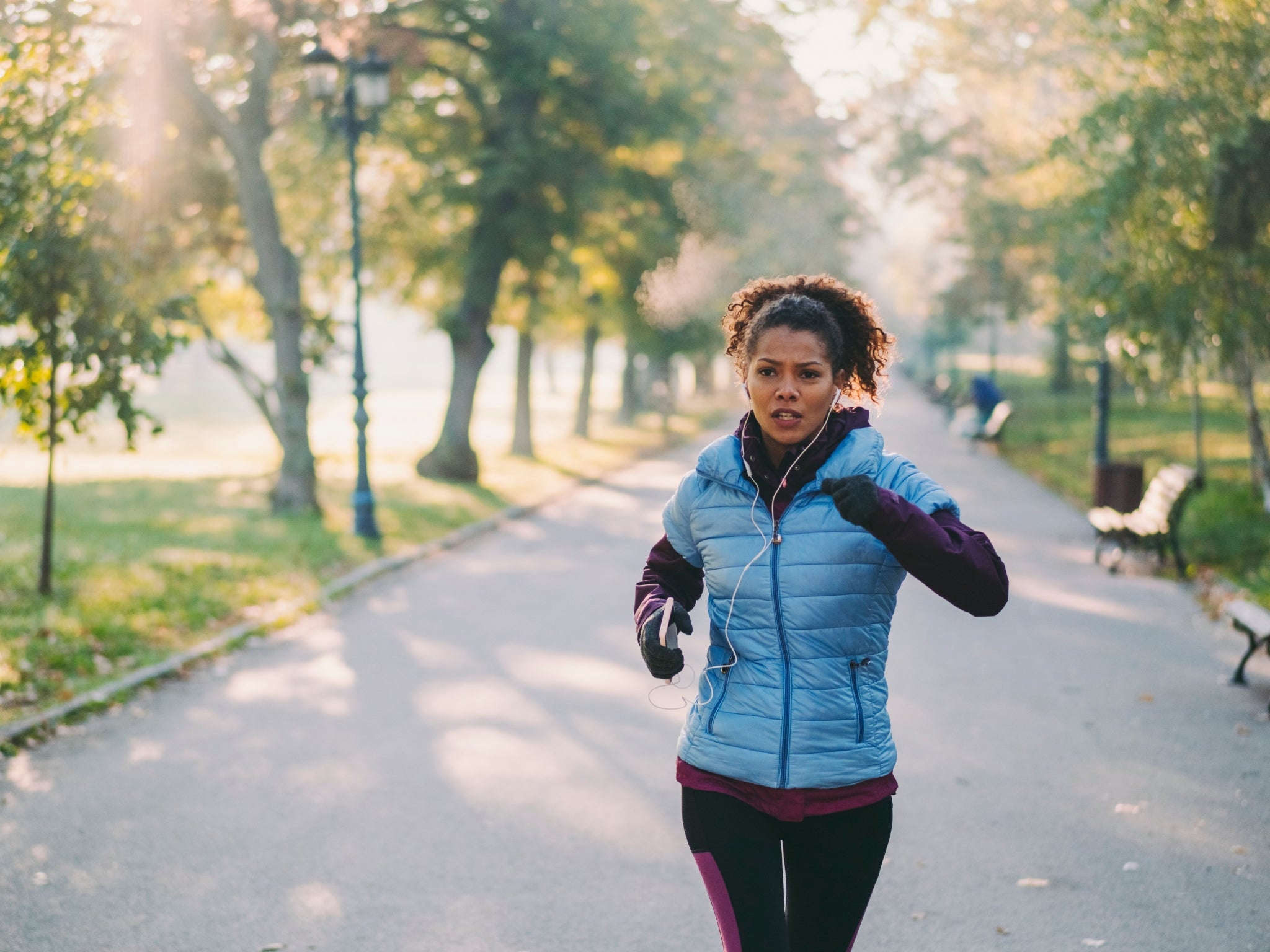The Independent's journalism is supported by our readers. When you purchase through links on our site, we may earn commission.
‘I get bad winter blues so I tried a SAD lamp – it’s now a staple of my routine’
In search of a more positive winter, Laura Hampson finds the light


Your support helps us to tell the story
From reproductive rights to climate change to Big Tech, The Independent is on the ground when the story is developing. Whether it's investigating the financials of Elon Musk's pro-Trump PAC or producing our latest documentary, 'The A Word', which shines a light on the American women fighting for reproductive rights, we know how important it is to parse out the facts from the messaging.
At such a critical moment in US history, we need reporters on the ground. Your donation allows us to keep sending journalists to speak to both sides of the story.
The Independent is trusted by Americans across the entire political spectrum. And unlike many other quality news outlets, we choose not to lock Americans out of our reporting and analysis with paywalls. We believe quality journalism should be available to everyone, paid for by those who can afford it.
Your support makes all the difference.When I first moved to the UK five years ago from my native New Zealand, it wasn’t the damp climate or the different accents or even that Christmas took place during cold weather that was the culture shock, rather it was that England appeared to be dark for half of every year.
Winter in the UK, I quickly discovered, especially after you get past the festivities of December and the odd snowy day, is...rather bleak. Even before the pandemic, I’d spend January and February in hibernation, opting to leave the house as little as possible while thinking wistfully about how my family and friends on the other side of the world would be river swimming and enjoying laid-back weekend barbecues in the sun.
Last winter it all came to a head. Working from home, gone were the large light-filled windows of the office and in its place came a stand-off between me and my boyfriend: Me, drawing the blinds wide open at every opportunity, and him closing them due to the “glare” on his computer screen. Unfortunately for us, in a poky one-bedroom flat in London, there wasn’t anywhere else either of us could go.
I tried everything and anything to get that natural light fix – I’d spend my lunch break walking around my local park, I moved my WFH set up even closer to the window and on weekends, when the sun was shining, I spent as much time outside as I could – even when the cold felt like it was about to freeze my nose off.
Whatever I tried, I found that the long stretches of grey days where sunshine is few and far between added another level to the misery of the pandemic – my daily walk ended up feeling more like punishment than an enjoyable break, leading me to switch up weekend wanders for more time indoors to escape the dreariness of the local park.
I’m not alone in noticing a mood shift during the winter months. Seasonal Affective Disorder (SAD), also known as “winter depression” or the “winter blues”, is thought to affect around two million people in the UK. It can affect anyone, including children, and the NHS says symptoms include a persistent low mood, a loss of pleasure or interest in everyday activities, feelings of despair and feeling lethargic.
And while not all of the symptoms the NHS lists apply to me personally, I do definitely notice a significant mood shift in the winter months. So, this year, I was determined to make a change. To treat SAD, the NHS recommends everything from exercising regularly to taking in as much natural sunlight as possible. I started doing Youtube dance HIIT workouts in the morning in the hope that squatting to Olivia Rodrigo would help perk me up for the day ahead. In fairness, it did a bit, but I was struggling to fully get my energy back.

Another popular method of treating low mood during the winter months is light therapy, where a special lamp (also known as a SAD lamp) is used to simulate exposure to sunlight.
Counselling Directory member and psychotherapist Rocana Bray explains that, while the cause of SAD isn’t “completely understood” it is “commonly recognised that during the winter months the hypothalamus part of the brain may not work as effectively in some people, as we are exposed to less daylight and vitamin D intake is lower”.
“When the hypothalamus is not working as effectively, this often impacts the individual’s levels of serotonin; commonly known as a ‘happy hormone’ in your body,” she says. “As levels of serotonin are lower, this can in turn affect your mood and sleep and you may have feelings of depression.”
The change of light in winter also impacts the body’s circadian rhythm, explains Dr Bray. “This is the body’s internal clock - so you may notice you are feeling more sluggish and less motivated when it’s time to get out of bed and this can sometimes go on throughout the day. In addition, melatonin, which is the sleepy hormone, may go into overdrive, which can contribute to that sluggish feeling.”
This is where SAD lamps come in. Shown to be effective in helping combat the milder symptoms of SAD in some patients, a SAD lamp can mimic the effect of the sun rising and setting and “positively impact the body’s regulation of melatonin and serotonin to help you feel more energised during the day,” Bray explains.
If you do want to use a SAD lamp, it’s recommended you do so daily throughout the winter months and ensure the lamp you select is suitable for therapy use – this isn’t about staring into an exposed lightbulb. So, after five winters in the UK, each of them spent dosing up on vitamin D tablets and mumbling to myself that perhaps I should get a SAD lamp, this year my boyfriend decided enough’s enough.
After the winter gone battling over blinds, he got me a SAD lamp for my September birthday. He picked the Gemoor lamp, which clocks in at the reasonable price point of £39.99, perfect for novice SAD lamp-ers like me. The Gemoor has a slick design – it’s smaller than an A4 sheet of paper but bigger than your average tablet – and it’s UV-free as well as offering adjustable brightness.
I waited until October, when the darkness began creeping in, before bringing it out on a particularly grim day. I’m told by Dr Bray that I should place the lamp no closer than 16 inches from my face and that my eyes should be “open, but not looking directly at the light”. Sounds simple enough.
Having 10,000 Lux light blaring at my face is not, it turns out, the relaxing start to the day I’d anticipated.
But having 10,000 Lux light blaring at my face is not, it turns out, the relaxing start to the day I’d anticipated. Suddenly I feel like I’m in an interrogation room and my left eye twitches a little in the glare. I decide to ease myself in and turn it down to the lowest setting.
As you’re only meant to use it for up to an hour a day - and my lamp gives you the option of setting a 15-, 30-, 45- and 60-minute timer, I set it to 30 minutes for my first few sessions.
This became my go-to time limit for the first week of use, before I bumped it up to 45-minutes. Now I’m sitting around the 60-minute mark and have even turned up the brightness a notch.
The lamp is placed on my WFH “desk” (actually the dining table) and, one month in, I’m into a bit of a routine. On sunnier days, I decide to use the lamp in the mornings when it’s still a bit dark outside and on grey days, I’ve switched it on in the afternoon for a focus boost. As we edge deeper into autumn, I imagine I’ll begin using it sometime between 3pm and 5pm, to give my brain that much-needed dose of light in the hours where I’ll be noticing the lack of it the most.
It took a while to notice anything and, while part of me was expecting a dramatic transformation in my mood, using a SAD lamp hasn’t automatically made me sunnier. Yet, I have noticed a gradual shift over the past couple of weeks. My energy levels are higher and, as the lamp has become part of my daily routine, I’m noticing that having it on has helped increase my focus, made me feel more alert and I’ve found that I’m sleeping better, too.
As well as the bright white light, the Gemoor has the option to switch to an orange-based light, which I’ve found works better for me in the mornings as it is a softer tone. The white light is better in the afternoon, when the sun would be at its peak during the summer, as it gives me that extra boost when the 3pm lull hits.
While it may not be the be-all and end-all cure for the winter blues (and it certainly doesn’t compare with swimming in a river in New Zealand), using a SAD lamp has brought a bit of pep back into my step and taken the edge off the bleakness of winter – and that’s a good enough result for me.
Want to try out one for yourself? We’ve rounded up our favourite SAD lamps on IndyBest.



Join our commenting forum
Join thought-provoking conversations, follow other Independent readers and see their replies
Comments